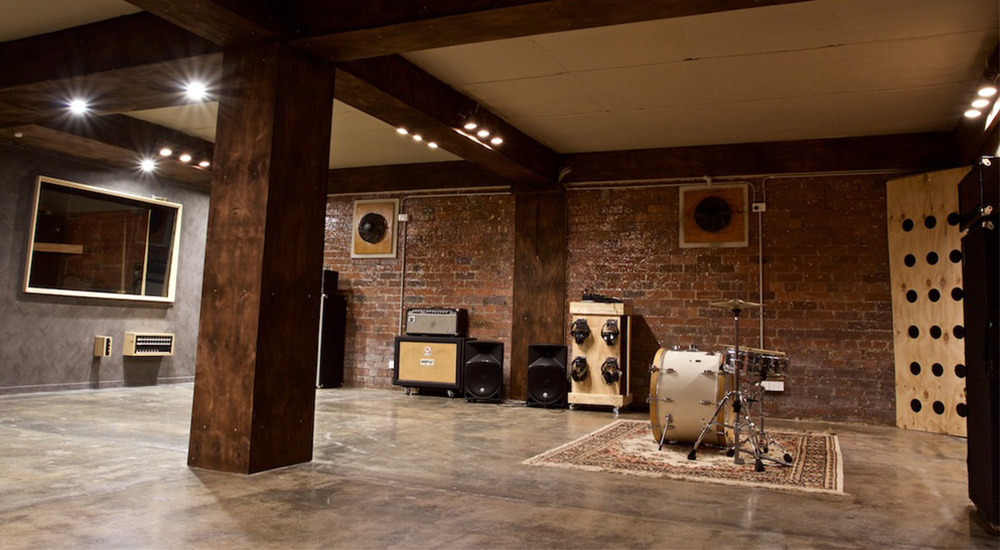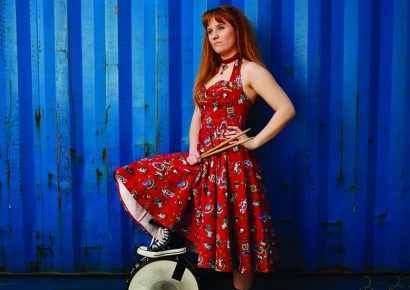When you add to that the obvious limitations that come with being an independent artist – limited access to resources and the like – producing your own music starts to feel like an insurmountable feat. It is with these people in mind that head engineer Chris Brownbill cut the ribbon on Brisbane’s Underground Audio. Smack bang in the middle of Brisbane’s West End, Underground Audio stands to serve the independent artists of the city by providing a studio that’s capable of capturing amazing sound, while making every effort to keep it’s running costs down. After all, a budget price shouldn’t necessarily mean budget results. There are ways, albeit very creative ones, to get the results you desire, without breaking the bank. As Brownbill explains, taking care in developing each and every aspect of the studio – and employing a can-do attitude – is the most important thing you can do.
“The facility is located in the basement of a 1930’s building that was originally constructed as an oyster factory. It was routinely empty as the actual premises weren’t that much to look at,” Brownbill says, thinking back to when he first put the rooms together. “I started off by getting people to hit drums and various other instruments in the room and then calibrated the acoustical design to flatter those instruments.
“Most contemporary facilities are treated by an acoustician, and for the most part end up much too dead, whereas with Underground I wanted to keep it as live as possible. Budget was patently a concern, but I didn’t want any corners to be cut in the build. I routinely visited different tip shops to obtain bricks, wood, insulation and lighting. Certain friends of mine work in construction so I was able to obtain silicon, nails and other minor contrivance. Powering the place was a matter of raiding abandoned buildings for breakers, conduit and cabling amongst other electrical items.”
This resourceful approach is what’s required to get a project like Underground Audio off the ground, and it’s the type of attitude that institutions like this inspire in the artists that inhabit them. When Brownbill first took hold of the space, he critically assessed what he had and worked toward maximising its strengths, rather than piecing together a studio in the image of someone else’s.
“Underground has the largest live rooms in Brisbane, to my knowledge” says Brownbill. “One thing I’ve noticed is some studios have rooms designed that have a million dollars put into them, but they’re a shoebox and ultimately dead sounding. This made freelancing as an engineer around Brisbane quite arduous for me and Underground manifested from this difficulty.”
The difficulties that come with working within someone else’s space not only spawned Underground Audio as an idea, but have informed its construction and equipment inventory along the way. Chris has acquired each bit of gear piece by piece, in order to familiarise himself entirely with the technical behaviour before moving onto the next.
“There is a 2” 24 track ampex MM1200 here that is used in some measure on essentially every record” says Brownbill. “Bands will often not have the funds to archive their recordings, in which case a computer is imperative. Additionally, many bands don’t wish to record to tape at all due to the aesthetics of their music. I give musicians all the options and let them make a choice as it is their record.
“The console here is a 32/64 channel Amek Einstein, regularly serviced and maintained. There are a few pieces of outboard here, a distressor and some mic preamplifiers. I find that freelance engineers bring their own pieces to sessions so there are tails left out here. I myself don’t use much compression, I mainly record instruments properly at the source and occasionally touch things slightly afterwards. I’m not a huge fan of utilising different microphone preamplifiers in the process of a record, I prefer to record sources cleaner with consistent sonics across the board.”
Though Brownbill has built this studio in a way that’s cohesive with his recording style, it sits ready and able to be commandeered by other engineers, which is something he welcomes. After all, that’s where Underground Audio’s roots lie. “I would say that about 90% of the work here is executed by me, but the space is of course open to freelance engineers. It’s always great to meet other engineers around the place.”
For more information about Underground Audio visit undergroundaudio.com.au.

